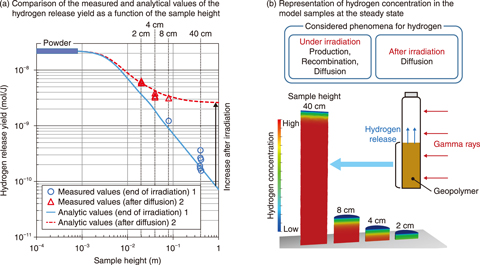
Fig.1-15 Measured and calculated hydrogen release yield as a function of sample height
Geopolymers are inorganic alumino-silicates that form solid ceramic-like materials at ambient temperatures. Geopolymer matrices have been proposed for confining a wide selection of nuclear wastes such as sludge and resins, Mg–Zr alloys, zeolites, Cs and Sr salts, and organic liquids. Geopolymers offer a good solution compared with other binders when a high pH is required, in high-temperature conditions, in case of chemical incompatibility between the waste and available matrices, or when the precipitation of silicate species is needed. However, the release of hydrogen gas (H2) from wasteforms is a major safety concern for encapsulating nuclear wastes. Hydrogen produced by radiolytic processes is a key factor for geopolymers because of a certain amount of water present in their porous structure.
In this work, the hydrogen release from a geopolymer was measured under 60Co gamma irradiation. The effect of sample size was studied for pure geopolymers, as was the addition of zeolites as an example waste material. The hydrogen release yield, defined as the quantity of hydrogen released into the gas phase per joule of radiation energy, was plotted for powder and 2-, 4-, 8-, and 40-cm long cylindrical samples; the results are shown in Fig.1-15(a). The hydrogen release yield decreased as the sample size increased; the hydrogen released from a 40-cm long cylinder sample was two orders of magnitude lower than a sample in powder form (1.9 × 10−10 and 2.2 × 10−8 mol/J, respectively).
A simple production, recombination, and diffusion (PRD) model was developed to interpret the results, considering only hydrogen production, potential recombination, and diffusion into the geopolymer matrix. The modeled representation of the experimental samples at steady-state is shown in Fig.1-15(b). Under irradiation, the hydrogen generated by water radiolysis is partially consumed by reactions with other radiolytic products on the diffusion path to the sample surface. The solid blue line in Fig.1-15(a) shows the predicted yield considering the release yield measured immediately after irradiation, reproducing the data. The red dashed line represents the same prediction considering that all of the hydrogen in the sample diffused and was released into the gas phase after irradiation, reproducing the data obtained in these conditions.
Given the diffusion constant of the matrix, the developed model successfully reproduced the evolution of hydrogen release as a function of water saturation level and predicted the evolution at sample sizes of up to 40 cm.
(Isao Yamagishi)